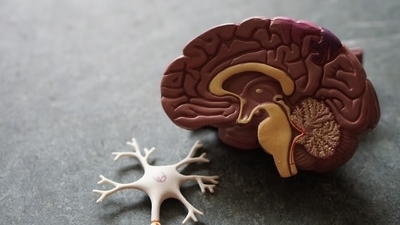Strokes are known as the “silent killer,” and for good reason. It can take years for warning signs to show themselves, and it’s often too late when they do. Around 10% to 20% percent of strokes are due to carotid artery disease, which is why understanding how the disease can cause you to have a stroke is vital.
Carotid arteries provide oxygen to your brain and other parts of your upper body. Carotid artery disease blocks oxygen from reaching the brain, resulting in a stroke. There are symptoms that can alert your doctor that you may be at risk for a stroke, so it’s important to know your risk factors. At Evansville Surgical Associates, we use a variety of approaches like the TCAR procedure to treat artery blockages.

What are carotid arteries?
Carotid arteries are essential for providing oxygen to the uppermost parts of your body. They’re located in your neck and extend upwards into your brain. At their lower end, carotid arteries are known as internal carotid arteries and provide blood to your brain. At their higher end, they’re known as external carotid arteries. They provide oxygen to your neck, face, and scalp.
What is carotid artery disease?
Carotid artery disease usually occurs when a fatty substance called plaque builds up inside your carotid arteries. As plaque builds up, it begins to harden and block blood flow. Your organs and the rest of your body need this oxygen-rich blood to function normally. A lack of it can result in serious health complications due to the decreased blood flow to the brain.
This process is known as atherosclerosis and can happen in any artery, although it has different results. For instance, atherosclerosis in your coronary arteries (those related to your heart) can lead to coronary artery disease or even a heart attack. For more information about artery-related diseases, check out our blog on risk factors for stroke and heart attack.
Strokes are especially dangerous since they can lead to brain damage. Also known as brain attack, strokes occur when oxygen-rich blood is prevented from reaching your brain. This can have an immediate effect since brain cells begin to die after a few minutes without oxygen.
Without treatment, you run the risk of experiencing:
- Long-term brain damage
- Vision problems
- Speech problems
- Paralysis
Other Ways It Can Lead to a Stroke
The narrowing of the carotid artery can occur in other ways that lead to a stroke. One cause is blood clots, which grow when blood platelets clump together at the site of an injury. These clots can partially or even fully block your carotid artery and cause a stroke.
Strokes can also occur when a blood clot or piece of plaque comes loose and travels up the bloodstream toward your brain. In this case, the fragment gets stuck in one of your blood vessels and blocks blood flow, eventually leading to a stroke.
Symptoms
It can take a while for plaque to build up in your arteries, so carotid artery disease can take some time to present itself. Fortunately, there are warning signs that our surgeons can check or be on the lookout to assess your risk.
The two main symptoms of carotid artery disease are bruit and transient ischemic attack (TIA). These telltale signs alert our surgeons that something is wrong so that they can help you get the treatment you need.
Bruit
Bruit is a sound that can be heard with a stethoscope during physical exams. It creates sound waves similar to whooshing when placed over your carotid artery. This may signal a change or reduction in blood flow due to plaque building up in the artery. We’ll make sure to perform more tests if we find a bruit to determine the problem and provide you with treatment.
Transient Ischemic Attack (TIA)
Also known as a mini-stroke, a transient ischemic attack is often the first sign of carotid artery disease. You may experience all the effects of a regular stroke during a TIA, or just a few. The difference is that the symptoms usually disappear on their own within 24 hours.
It helps to know the symptoms of a stroke in case you experience a TIA. Pay attention to see if you experience:
- Sudden numbness or weakness on one side of the body
- Dizziness
- Difficulty seeing out of one or both eyes
- Loss of movement in one or more limbs
- Difficulty speaking or understanding speech
- A sudden, painful headache with no known cause
Suffering a mini-stroke is a clear sign that you’re a high risk for a stroke. Seek medical attention immediately to learn your risk factors and receive treatment. Acting quickly may be able to prevent a stroke in the future.
Risk Factors
There are certain factors that put you at a higher risk of carotid artery disease. They include:
- High blood pressure
- High blood sugar
- Sedentary lifestyle
- Being overweight or obese
- Smoking
- Family history of atherosclerosis
Talk to our team today to learn your risk factors and what you can do to avoid carotid artery disease.
TCAR Treatment for Stroke in Evansville, IN
Around 10% to 20% percent of strokes are due to carotid artery disease, which is why our team at Evansville Surgical Associates utilize different approaches like the TCAR procedure to treat blockages.
Short for transcarotid artery revascularization, TCAR reverses blood flow temporarily to divert plaque in the bloodstream from the brain to decrease your risk of stroke during the procedure. We then place a carotid artery stent to keep the carotid artery open. This allows blood to flow freely without being blocked by plaque.
Carotid arteries are essential for supplying oxygen to your brain. When your carotid arteries become blocked, oxygen is prevented from reaching your brain and can lead to a stroke. There are warning signs that can alert us to your risk for a stroke, so it’s important to be aware of your risk factors.
Are you concerned about your risk of carotid artery disease? Call us today at (812) 424-8231 or (800) 264-8231 to schedule your appointment!
Evansville Surgical Associates has been providing comprehensive and compassionate surgical care for over 50 years. Call us at (812) 424-8231 or (800) 264-8231. We are available from 8:00 am to 4:30 pm if you would like to schedule an appointment.



